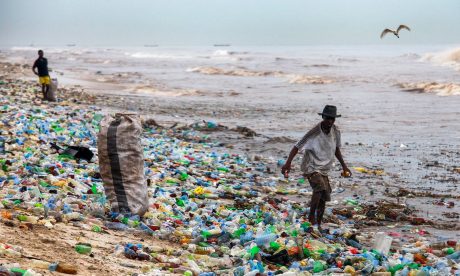In 2003, I was told by a restaurant owner on a Thai island that local fishermen used to wrap their lunch in banana leaves, which they would then casually toss overboard when done. That was OK, because the leaves decayed and the fish ate the scraps. But in the past decade, he said, while plastic wrap had rapidly replaced banana leaves, old habits had died hard – and that was why the beach was fringed with a crust of plastic. Beyond the merely unsightly, this plastic congregates in continent-scale garbage gyres in our oceans, being eaten by plankton, then fish; then quite possibly it’ll reach your plate …
This is a worldwide problem – we can’t point the finger at Thai fishermen. The west started this. The developing world justifiably yearns for its living standards and, with it, its unsustainable convenience culture.
The UK alone produces more than 170m tonnes of waste every year, much of it food packaging. While it has revolutionised the way we store and consume food, there is now so much of it that landfills can’t cope. Some of it is poisonous, and some of it never degrades. It can take 450 years for some types of plastic bottle to break down; one type, PET, while recyclable, doesn’t biodegrade at all. And yet only a third of plastic packaging is recycled. Indeed, as Rachelle Strauss of the UK’s ZeroWasteWeek, says, we never actually throw anything “away” – it’s really just put somewhere else.
But recycling is just a drop in the ocean – most of the environmental cost of our throwaway wrapping is upstream – in its manufacture. We were closer to an answer 30 years ago: what on earth happened to milkmen and bottle deposits? Now we live in an absurd age where a packet of crisps can have seven layers of wrapping. Continue reading
Source and Image:
- The Guardian, article by Dave Hall, a production journalist and editor at the Guardian.
